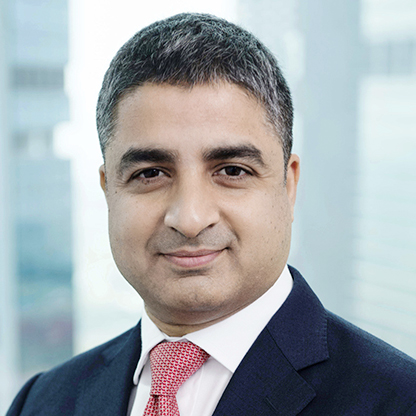The current pace of advances in generative artificial intelligence (AI) makes it difficult to forecast how the technology will affect the economy, business and society. Nonetheless, it already seems clear that the new AI applications will produce a narrow cohort of winners and lead to a smaller workforce, confronting governments with big policy challenges.
Consider how AI will affect the three key components of growth: capital, labour and productivity. In terms of capital, the massive volume of investment required to power AI innovations ensures that there will be a smaller, more concentrated set of winners. Big Tech firms with monopolies in their respective markets are the only ones that can afford the enormous costs associated with developing, training and powering large language models (LLMs).
Most of these costs come from running high-end graphics processing units (GPUs), and from powering and cooling enormous data centres. Sam Mugel, the chief technology officer of Multiverse, estimates that training the next generation of LLMs will soon cost at least US$1 billion. In 2023 alone, the Magnificent Seven – the top technology companies in the United States –allocated a combined US$370 billion to research and development. That is roughly equal to the European Union’s total R&D budget (counting both businesses and the public sector).
With respect to labour, it is too early to anticipate the winners and losers, or how the gains and losses associated with AI will be distributed across the economy. While a 2023 report from Goldman Sachs estimated that AI could “expose the equivalent of 300 million full-time jobs to automation”, a World Economic Forum survey of 803 companies points to a much lower net loss, owing to job creation related to investment in the green transition and climate change adaptation.
In any case, many fear that AI will contribute to long-term structural unemployment, creating a jobless class that will include both skilled and unskilled workers. But while the projections above provide a baseline of what might occur, there is ample scope to refine our thinking on the issue. After all, the scale of the problem will depend on which jobs are lost at different points of the AI value chain.
We have not yet seen what job losses at one link in the chain will mean elsewhere in the technology sector, let alone the broader economy. The impact on jobs could vary widely as we move from chip manufacturers, AI infrastructure, and AI applications to sectors such as health care, education, and telecommunications – all of which are poised to benefit from AI innovations. At the technology’s base, there is already enormous growth and job creation as chip manufacturers (such as Nvidia) build fabrication facilities and invest in the production capacity that will drive the AI revolution.
It is less clear how many jobs will be created or lost elsewhere, because no one can predict all the ways a new technology will be used, or what knock-on effects it may have. Early indications of AI’s impact on long-term efficiency and productivity gains are encouraging – at least for those workers who will still have jobs. For example, a 2023 study of 5,000 workers by Erik Brynjolfsson, Danielle Li and Lindsey R. Raymond found that AI tools boosted worker productivity by 14%, on average, and by 34% for new and low-skilled workers.
Technological advances have a long track record of enhancing global connectivity in trade and telecommunications, expanding access to public goods like health care and education, driving innovation, improving living standards, and ultimately powering broad-based economic growth. There is no reason to think that AI will not do the same.
Moreover, AI will likely diffuse across the wider economy faster than previous technologies did, which means that AI-related productivity and efficiency gains could happen sooner rather than later. Earlier general-purpose technologies (such as the steam engine, electrification, and personal computers) required vast outlays to build the underlying infrastructure. It took more than 40 years for electricity to become widely accessible in the first half of the 20th century, and it took roughly a decade for smartphones to surpass 90% adoption in the 2010s. AI, by contrast, can be deployed through existing digital platforms and devices.
The upshot is that the AI super cycle will likely drive productivity gains and stronger economic growth – to the tune of US$16 trillion globally by 2030, in PwC’s forecast. But these gains will accrue largely to the owners of capital, and less so to a potentially shrinking labour force. In an era of less labour-intensive growth, many companies and industries will adapt their business models – namely, by increasing the ratio of capital to employment – and governments will need to reassess tax and welfare policies.
If greater economic gains are flowing to the owners of capital, taxes will need to change accordingly. For example, a much higher corporate tax rate may be necessary to capture the excess profits generated by automation and a smaller workforce. With respect to welfare, the threat of rising structural unemployment from AI will reinvigorate debates about hitherto radical proposals such as a universal basic income.
We must reflect on AI’s effect on inequality both within countries – between capital and labour – and among countries. A widening gap between technology leaders, such as the US and China, and the rest of the world – particularly the poorest economies – bodes ill for an already-fraught geopolitical environment.
Dambisa Moyo is an international economist.
Copyright: Project Syndicate









